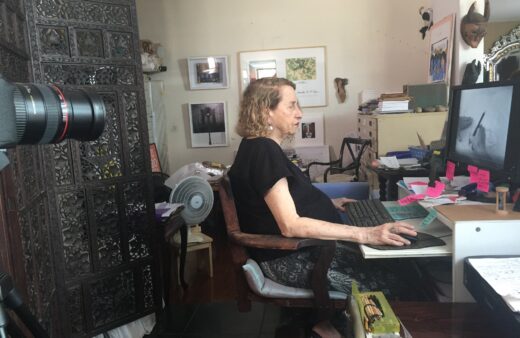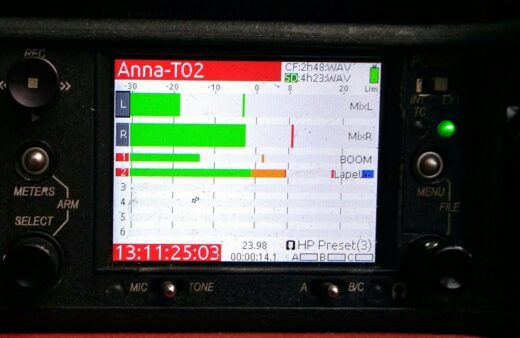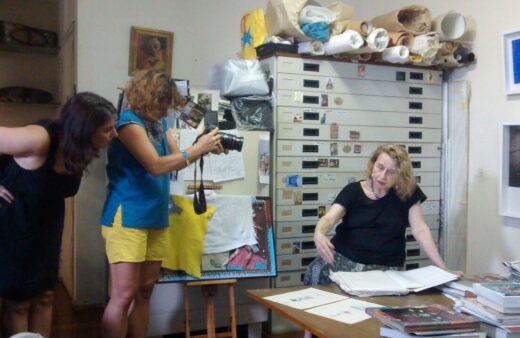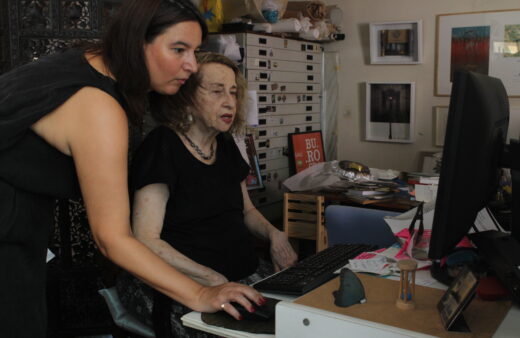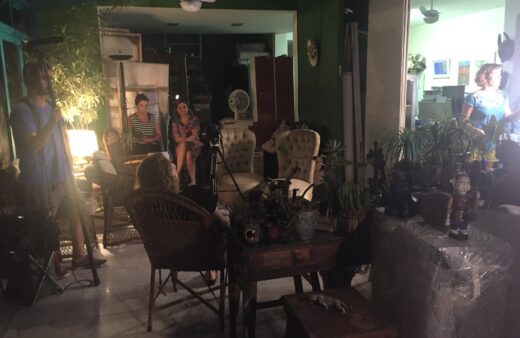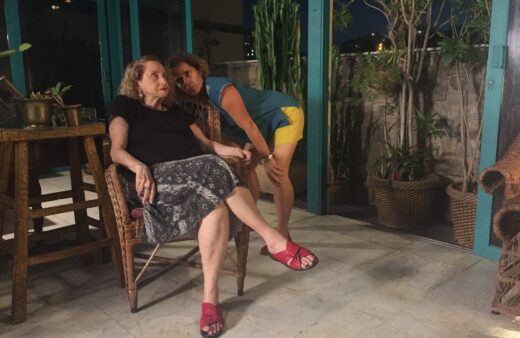
was among the first Brazilian artists to experiment with video as Art.
Her first artworks, pure abstractions in painting and engraving, launched her career in the early 1950s. Her studies and encounters with artists in New York City during an extensive stay 1953-54 and often thereafter, widened her interest in progressive options for art topics and artmaking. Beyond her celebrated abstract achievements, she is also noted for multimedia works that contemplate Brazilian identity – national, historical, geographical, social, political and personal.
In response to socio-political conditions, precipitated by a coup and the establishment of military dictatorship (1964-1985), Geiger’s approach shifted in the 1960s – first, toward visceral figuration, and then, temporarily away from painting altogether. Due to their associations with resistance efforts, her husband, Pedro, a professor of geography, was imprisoned for two years and she was often detained.
For Geiger, the daughter of Polish-Jewish immigrants, the instinct to challenge repression was inculcated.
In the early 1970s Geiger explored conceptual means to create to “meditations.” Filmmaker Jom Tob Azulay introduced her to video making in 1974. The medium provided a new means to analyze the interface between history and memory. Collage, photography, metal and wax sculpture, super 8 film, found-object and text-based works assemblage and artists books as well as installations and performance (she terms Actions), were among the means she cultivated for her artistic arsenal. While covertly resisting the regime, she not only oversaw raising her four children but also emerged as a prolific and influential artist, activist and professor of art.
Her black and white videos from the mid 1970s are as inventive as any that emerged during this period throughout the art world. In Brazil many art critics were skeptical about whether video could resonate as Fine Art. The international debut of her works in Videoarte Brasil 1975, revealed her patient poetry to be as universal as it is timeless.
By the 1980s the artist re-embraced painting but also perpetuated her multi-media endeavors.Collected and presented worldwide, her work was included in a group show in the Brazil Pavilion at XXXIX Venice Biennale, 1980. Among her many distinctions is a John Simon Guggenheim Fellowship, awarded in 1983 for film research. In 1987, with Fernando Cocchiarale, she co-authoreda landmark study, Geometric and Informal Abstractionism: The Brazilian Avant-garde in the Fifties.
In the 21st century, Geiger’s older and current artworks continue to make waves. Her achievements have been showcased in notable exhibitions such as Radical Women: Latin American Art, 1960-1985 (toured to US and Brazil in 20017) and a major retrospective, Anna Bella Geiger: Native Brazil/Alien Brazil.
Countless Brazilian and international presentations affirm the continuing relevance of Geiger’s themes and experimentation. She has remained as devoted to her studio endeavors as she is to presenting courses, lectures, interviews and commentaries.
Her impact is ever-expanding among those who study her and, those who have, or currently, study with this tireless pioneer.
